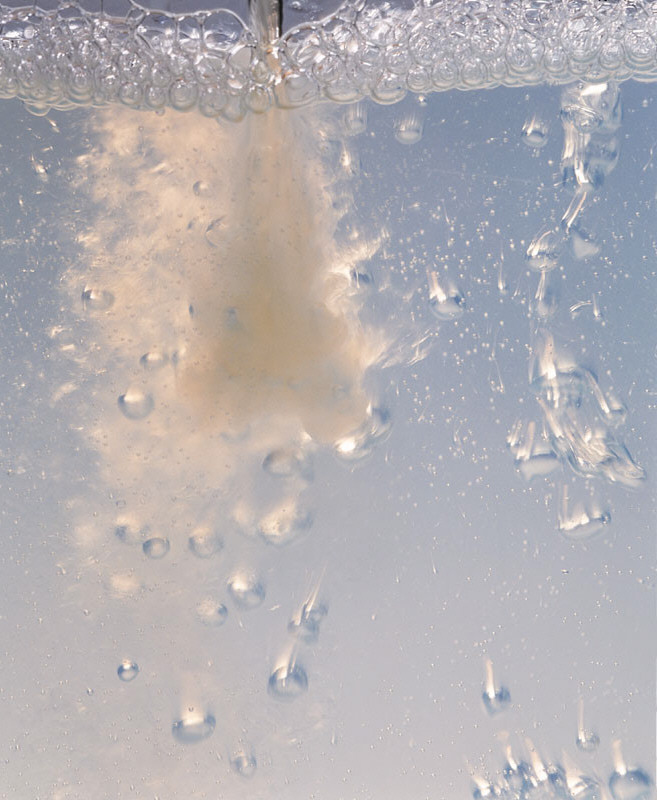The Role of Defoamers in the Chemical and Food Processing Industries
The Role of Defoamers in the Chemical and Food Processing Industries
Blog Article
The Function of Defoamers in Enhancing Item Quality and Performance
Defoamers serve as essential additives that mitigate this concern, making sure smoother manufacturing operations while enhancing the practical and aesthetic attributes of the final items. The choice of the proper defoamer can be critical to accomplishing ideal outcomes, raising crucial inquiries concerning solution compatibility and performance metrics that warrant additional expedition.
Recognizing Defoamers
Understanding the duty of defoamers is essential for preserving product top quality across various industries. Defoamers are chemical additives developed to protect against the formation and decrease of foam in fluid systems, which can detrimentally impact processes such as mixing, filling up, and surface area tension. Foaming can result in inadequacies, product problems, and endangered visual appeal, making defoamers a vital component in producing procedures.
In industrial applications, defoamers assist to enhance item uniformity and security. In the paint and layers industry, foam can interfere with the application process and the final surface. In food and beverage production, excessive foam can impede bottling and packaging efficiency. The efficient use defoamers not only makes sure smoother production processes however likewise adds to superior product performance.
Furthermore, the choice and formula of a defoamer must align with particular application requirements, such as compatibility with other active ingredients, effectiveness under differing temperature and pH conditions, and possible governing restraints. Ultimately, comprehending defoamers' features and their relevance in different solutions is essential for optimizing manufacturing and guaranteeing the finest quality output.
Sorts Of Defoamers
Defoamers can be classified right into numerous types based upon their structure and device of action. The key kinds consist of silicone-based, non-silicone natural, and inorganic defoamers.
Silicone-based defoamers are amongst one of the most efficient, primarily because of their capability to spread out promptly on the liquid surface and disrupt foam development. Their special chemical structure permits for superior security, making them appropriate for high-temperature applications and environments with varying pH levels.
Non-silicone natural defoamers, commonly composed of fatty acids or natural oils, are valued for their biodegradability and reduced poisoning. These are typically used in food and beverage applications where safety and security and ecological effect are critical.
Not natural defoamers, that include compounds like talc or calcium carbonate, act by boosting the thickness of the liquid, thus decreasing foam stability. They are often made use of in industrial procedures where compatibility with other materials is not an issue.
Each sort of defoamer has distinct benefits and constraints, enabling tailored services depending upon the details frothing problems experienced in various applications. Comprehending these differences is important for optimizing efficiency and attaining wanted item top quality.
Applications Throughout Industries
Various industries take advantage of defoamers to improve product high quality and functional performance. In the food and beverage sector, defoamers are important in procedures such as developing and dairy manufacturing to stop foam development, which can cause inefficiencies and product variance. By regulating foam, producers can ensure much better return and an extra uniform product.
In the pharmaceutical market, defoamers play a vital role in the formulation of fluid medications, where extreme foam can hamper blending and precise dosing. Their use assists keep the stability of the solutions and helps with smoother manufacturing processes.
The paint and finishes market also depends on defoamers to boost the performance of products during application. By lessening foam, these additives guarantee a smoother finish and boost the visual top qualities of the end product.

Benefits of Making Use Of Defoamers
While the application of defoamers varies throughout industries, their advantages regularly boost item quality and process effectiveness. One significant advantage is the reduction of foam development throughout making processes, which can otherwise lead to manufacturing delays and inconsistencies in product quality. By reducing foam, defoamers enable a smoother flow of products, assisting in a lot more efficient operations and lowering the possibility of devices breakdowns.
In addition, making use of defoamers can enhance the appearance and appearance of final products. In markets such as coverings, paints, and food processing, extreme foam can jeopardize the visual looks and total top quality, while the appropriate defoamer application makes certain an uniform coating and preferable characteristics. Furthermore, defoamers can add to set you back financial savings by decreasing waste throughout production and enhancing using basic materials (defoamers).

Selecting the Right Defoamer
Selecting the appropriate defoamer is essential for optimizing production processes and making sure item quality. The option of defoamer influences not just the performance of foam control yet likewise the general performance characteristics of the final item. Aspects to take into consideration include the type of application, the chemistry of the formula, and the ecological conditions under which the product will be utilized.
Different markets might call for details defoamer types, such as silicone-based, organic, or polymeric defoamers. Comprehending the compatibility of the defoamer with the key active ingredients is vital to avoid unfavorable reactions that can compromise product stability. Furthermore, the defoamer's performance in numerous temperatures and pH levels have to be reviewed to make certain consistent efficiency.
Testing the defoamer in small-scale applications can supply important understandings into its performance and viability. Factor to consider of governing conformity, specifically in food, drugs, and cosmetics, is extremely important in picking a defoamer. Eventually, an extensive analysis of these variables will certainly lead to the selection of a defoamer that not just manages foam effectively but likewise improves the top quality and efficiency of the final item.
Verdict

In conclusion, defoamers are crucial additives that dramatically enhance product quality and performance throughout various markets. The critical selection and application of defoamers lead to set you back financial savings, optimized resource use, and increased client satisfaction.
Frothing can lead to inadequacies, product flaws, and jeopardized aesthetic appeal, making defoamers an important component in making procedures.

Report this page